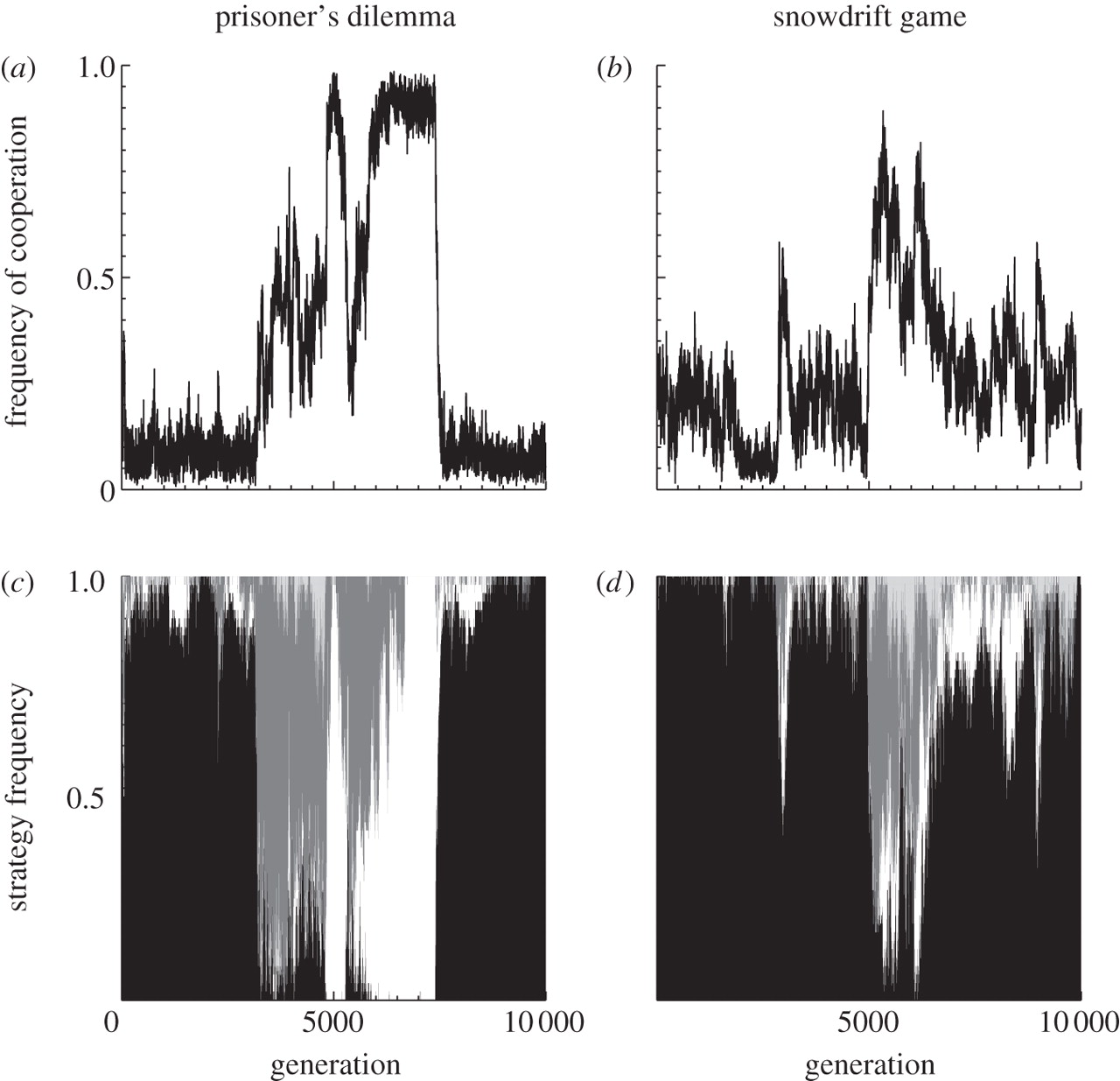Cooperation and the evolution of intelligence
April 13, 2012

The emergence of intelligent strategies. Shown are the dynamics during 10,000 generation subsets of simulations for the prisoner's dilemma and snowdrift games. (Credit: Luke McNally, Sam P. Brown, and Andrew L. Jackson/Proc. R. Soc. B)
Trinity College researchers have constructed an artificial neural network model that demonstrates that human intelligence evolved from the need for social teamwork.
The high levels of intelligence seen in humans, other primates, certain cetaceans, and birds remain a major puzzle for evolutionary biologists, anthropologists and psychologists.
It has long been held that social interactions provide the selection pressures necessary for the evolution of advanced cognitive abilities (the “social intelligence hypothesis”), and in recent years, decision-making in the context of cooperative social interactions has been conjectured to be of particular importance.
Study details
The researchers used an artificial neural network model to show that selection for efficient decision-making in cooperative dilemmas can give rise to selection pressures for greater cognitive abilities, and that intelligent strategies can themselves select for greater intelligence, leading to a Machiavellian arms race.
The results provide mechanistic support for the social intelligence hypothesis, highlight the potential importance of cooperative behavior in the evolution of intelligence.
The neural networks (“brains”) participated in two classic social dilemmas: the iterated prisoner’s dilemma (IPD) and the iterated snowdrift game (ISD). In both games, two players must choose between cooperation and defection during repeated rounds. Upon completion of either game, each “brain” produced “offspring” asexually, with “brains” that made more advantageous choices during the games programmed to have a better chance to reproduce.
A potential random mutation during each generation changed the the “brain’s” structure, number of neurons, or the strengths of the connections between those artificial neurons simulating the evolution of the social brain. After 50,000 generations, the model showed that as cooperation increased, so did the intelligence of the programmed brains.
Ref.: Luke McNally, Sam P. Brown, and Andrew L. Jackson, Cooperation and the evolution of intelligence, Proc. R. Soc. B, 2012 [DOI: 10.1098/rspb.2012.0206] (open access)